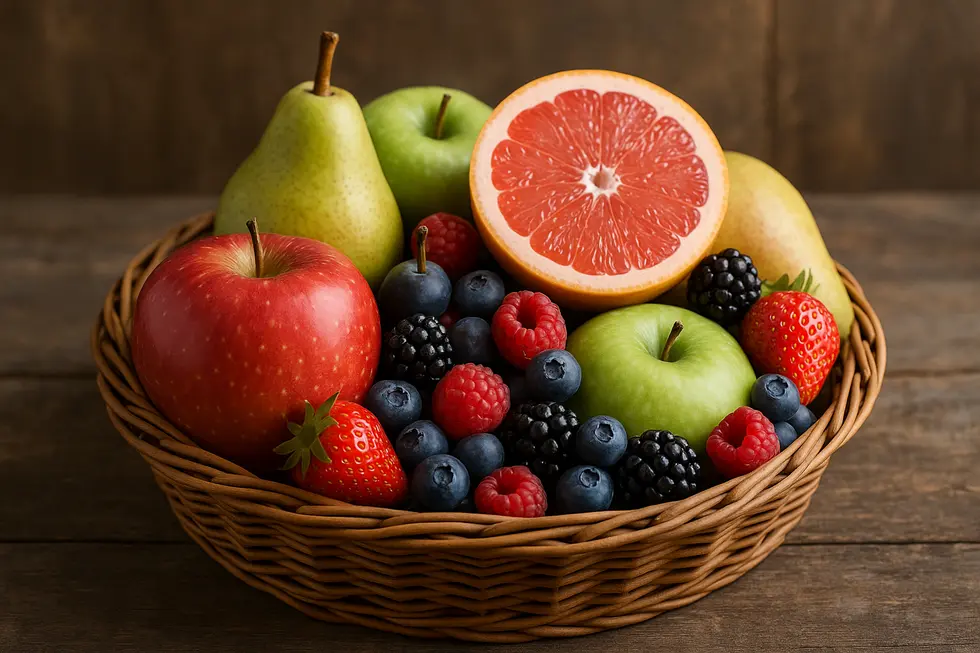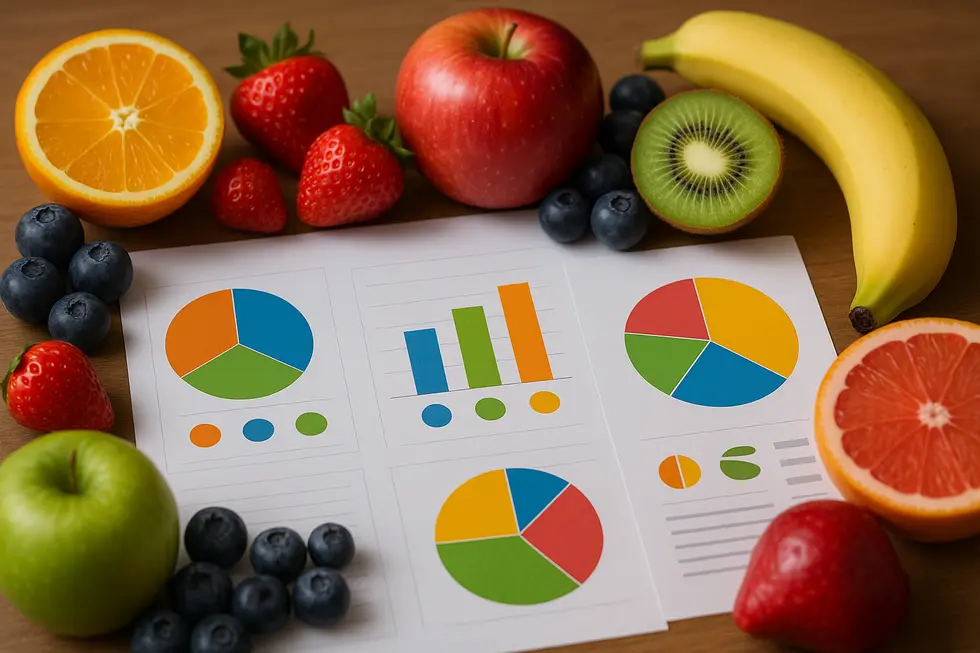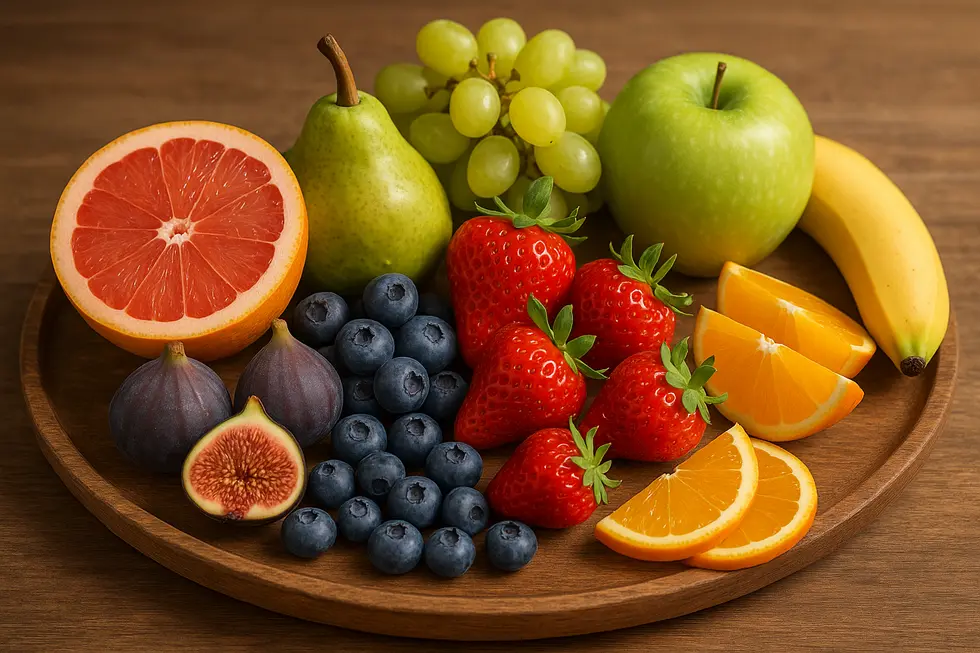Balancing blood sugar levels is a crucial aspect of diabetes management and overall health maintenance. Low glycemic fruits can play an essential role by providing vital nutrients while moderating blood glucose impact. Their low Glycemic Index (GI) and Glycemic Load (GL) values help prevent sharp rises in blood sugar, offering benefits such as reduced inflammation and improved heart and digestive health. This article delves into the remarkable health benefits of these fruits, examines their nutritional profiles, and offers effective dietary strategies for incorporating them into daily meals to better manage diabetes.
The Transformative Power of Low Glycemic Fruits in Diabetes Management

Low glycemic fruits play a crucial role in diabetes management by facilitating steady blood sugar control. These fruits, with their glycemic index (GI) values typically below 55, induce a gradual rise in blood glucose—a significant health advantage for individuals with diabetes who strive to avoid sharp spikes in blood sugar levels. Such stability is paramount in mitigating risks associated with hyperglycemia and ensuring a balanced glycemic profile.
Better Blood Sugar Control
A diet incorporating low glycemic fruits like berries, apples, oranges, pears, and peaches can remarkably improve blood sugar management. For instance, consuming blueberries as part of a morning snack or including an apple in your afternoon meal can slow the absorption of sugars into the bloodstream. This delayed absorption ensures a more consistent and controlled release of glucose, helping to maintain steadier levels of blood sugar. Such a dietary approach supports long-term glycemic control and reduces fluctuations that could exacerbate diabetic symptoms.
Rich in Fiber and Nutrients
These fruits are not only about controlling sugar; they are rich sources of dietary fiber, which plays a significant role in digestion and satiety. Apples and pears, for example, are especially beneficial when consumed with their skins, as the fiber content slows digestion. This not only moderates blood glucose absorption but also supports weight management by promoting a feeling of fullness, thus reducing the drive to overeat. Moreover, low glycemic fruits are dense in essential nutrients such as vitamin C, potassium, and vitamin A, all of which contribute to general health improvements and may alleviate certain diabetic complications.
Antioxidant Properties and Gut Health
The antioxidant profile of low glycemic fruits cannot be overstated. Antioxidants combat oxidative stress—a condition linked to various complications in diabetes. For instance, grapes are rich in compounds that bolster cardiovascular health by reducing inflammation, a common issue faced by those with diabetes. Additionally, the high fiber content supports a healthy gut microbiota, which is crucial for metabolic health and overall insulin sensitivity. Prunes, with their natural laxative properties, further contribute to improved digestive function, making them a smart choice for maintaining a healthy digestive system.
Versatility in a Diabetic Diet
The versatility of low glycemic fruits in meal planning offers a delicious and practical component to diabetic-friendly diets. By pairing fruits like strawberries with protein sources such as yogurt or healthy fats like nuts, the digestion process is slowed down even further. This combination can help mitigate post-meal blood sugar spikes by ensuring a steady release of glucose, thus providing energy in a sustained manner. Such practices make these fruits not only beneficial but also an enjoyable part of daily nutrition.
As we can see, integrating these fruits into one’s diet facilitates better management of diabetes by creating a balanced nutritional profile that supports metabolic health. For more insights on incorporating low glycemic foods into your diet, consider visiting Low Glycemic Foods Benefits. However, it is always recommended to consult with healthcare providers for tailored advice, as individual needs can vary significantly in people managing diabetes.
A Closer Look at the Nutritional Gems of Low Glycemic Fruits

The world of fruits, abundant with vibrant colors and luscious flavors, offers a variety that is not only delicious but also health-promoting, especially for those managing their blood sugar levels. Low glycemic fruits stand out as some of the best options due to their ability to keep blood sugar levels stable. But what makes these fruits such a boon to individuals following a low glycemic diet? Let’s delve deeper into their nutritional profiles and discover why they are invaluable for maintaining overall health.
Low glycemic fruits are characterized by their glycemic index (GI) values of 55 or less, meaning their consumption results in a slower release of glucose into the bloodstream. This attribute makes them particularly vital for individuals with diabetes, who must manage their blood sugar levels carefully. By integrating these fruits into one’s diet, one can harness their nutritional benefits without the fear of sudden spikes in blood glucose.
Among the most widely appreciated low glycemic fruits are apples, which have a GI of 36. Known for their crunchy texture and sweet, tart flavor, apples do much more than just satisfy the taste buds. They are high in fiber, particularly pectin, which aids in digestion, provides a feeling of fullness, and plays a significant role in blood sugar control. Apples serve as a practical example of how low glycemic fruits merge with dietary fiber to enhance satiety and manage blood sugar levels effectively.
Blackberries and cherries are also commendable choices for those monitoring their glycemic load. With GI values of 25 and 22, respectively, these fruits are not only low in sugar but are also powerhouses of antioxidants. These antioxidants, like anthocyanins, have been linked to improved heart health and may even guard against certain types of cancers. Moreover, cherries possess anti-inflammatory properties that are beneficial for heart health, reinforcing that their advantages extend beyond just managing diabetes.
The realm of low glycemic fruits also includes grapefruits, with a GI of 25. Known for their richness in vitamin C and fiber, grapefruits are a refreshing option that enhances the immune system. This citrus fruit is also celebrated for its benefits in weight management and improving insulin resistance, making it a versatile addition to any diet focused on blood sugar control. On the other hand, apricots—low in carbohydrates and calories—offer polyphenolic compounds that are associated with lowering blood sugar levels and improving insulin sensitivity.
For those with a penchant for tropical flavors, mangoes fit the bill. They can be enjoyed in moderation due to their higher glycemic index, but they also present a good amount of fiber and antioxidants, which are crucial for maintaining optimal health. Meanwhile, peaches bring a delightful sweetness and are nutritious, packing vitamins like A and C, potassium, and polyphenols—each contributing to the body’s well-being.
Low glycemic fruits provide an array of nutritional benefits, extending from heart health to digestive support. Their incorporation into daily meals can serve as a significant step toward a balanced and health-conscious diet. While these fruits offer numerous health benefits, it is important to consume them thoughtfully, ideally paired with proteins or healthy fats to minimize any potential blood sugar spikes.
Integrating low glycemic fruits into one’s diet is more than a dietary choice—it’s a lifestyle enhancement that fosters long-term health benefits. For more insights on the advantages of incorporating these fruits into your diet, visit Low Glycemic Fruits Benefits.
Eating Wisely: Seamlessly Blending Low Glycemic Fruits into Your Everyday Diet

Incorporating low glycemic fruits into your meals is not merely a thoughtful gesture towards balancing blood sugar levels; it’s an artful practice that enhances your dietary habits with a bouquet of flavors and health benefits. These fruits are celebrated not only for their intrinsic ability to cause gradual blood sugar increases but also for their rich nutrient profile which includes essential vitamins, minerals, and antioxidants. Amidst the array of fruits, the likes of succulent berries, crisp apples, rich pears, and tangy grapefruits emerge as champions of a low glycemic lifestyle.
Understanding the Vivacity of Low Glycemic Fruits
The appeal of low glycemic fruits lies in their gentle effect on your body’s glucose levels. The Glycemic Index (GI) quantifies how quickly carbohydrates in foods turn into sugar in the bloodstream. Foods with a GI of 55 or below are categorized as low glycemic, making them ideal companions for those looking to manage their glucose levels. Conversely, the Glycemic Load (GL) provides a broader perspective by considering the carbohydrate content in a serving, offering a more holistic view of a food’s influence on blood sugar.
Embodied within these scoring systems, the concept of low GI and GL fruits offers a dietary strategy that marries well with the lifestyles of diabetics and the health-conscious alike. Such fruits as grapefruits, cherries, and oranges, with their low glycemic values, support a balanced diet while ensuring a slower absorption rate, preventing the rapid glucose spikes that can lead to health complications.
Culinary Integration: The Nourishing Fusion of Flavors and Function
The seamless inclusion of low glycemic fruits into daily meals can transform your nutritional regime and rejuvenate your palate. The key lies in intelligent culinary pairings. Pairing an apple with a spoon of almond butter or nestling berries in a lush bowl of Greek yogurt can amplify not just the taste but the metabolic benefits, stabilizing blood sugar levels while introducing additional protein and healthy fats. These pairings are not just about taste balance but are rooted in the science of blood sugar regulation.
Moreover, embracing the natural fiber present in fruit skins, especially in fruits like apples, enhances digestion and further aids in modulating glucose release into your bloodstream. Such dietary fiber is invaluable, as it helps slow the digestion process and promotes a feeling of fullness, aiding both weight management and blood sugar control.
Harmonizing Health and Enjoyment
Incorporating such practices elevates the fruits’ inherent nutritional value and allows you to enjoy their natural sweetness without guilt. Choosing fruits low in glycemic impact facilitates a nutritious and satiating diet that acts as a foundation for managing chronic conditions like diabetes while also enhancing overall well-being. This strategy aligns with a life where health and pleasure in food can coexist harmoniously.
For those intent on adopting low glycemic fruits as dietary mainstays, drawing upon detailed resources can bolster your understanding and application. For an enriching exploration of low glycemic foods, consider examining available dietary guides found at Glycemic Diet Plan Insights. Such resources provide insights that can carve out a pathway to sustained dietary wellness, ensuring your meals are as healthful as they are enjoyable.
Final thoughts
Low glycemic fruits are a valuable addition to the diet for those managing diabetes or seeking a health-conscious lifestyle. Their ability to stabilize blood sugar while providing nutrients makes them indispensable. By understanding their health benefits, nutritional profiles, and effective integration methods, individuals can take proactive steps toward better health management. These fruits not only support diabetes control but also promote cardiovascular and digestive wellness, ensuring a holistic approach to health.
Don’t just read about better health—live it. Download the Glycemic Index Guide Tracker today to start making smarter food choices, track your glucose, and stay on top of your nutrition—all in one app.
About us
Glycemic Index Guide Tracker is a powerful yet easy-to-use mobile app designed to help you make informed dietary choices by tracking the glycemic index (GI) and glycemic load (GL) of the foods you eat. Whether you’re managing diabetes, following a low-carb or keto diet, or simply aiming to maintain steady energy and better health, the app offers a comprehensive food database, nutrition and glucose tracking tools, weight monitoring, and curated low-GI recipes—all in one intuitive interface. It’s your go-to companion for understanding how different foods affect your blood sugar and for building smarter eating habits.


Leave a Reply